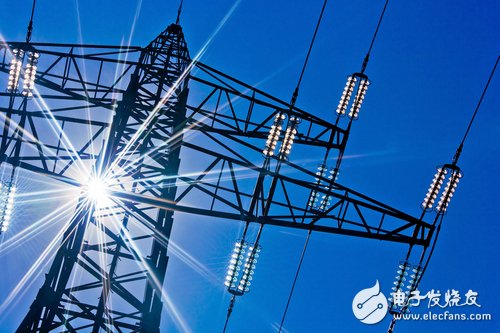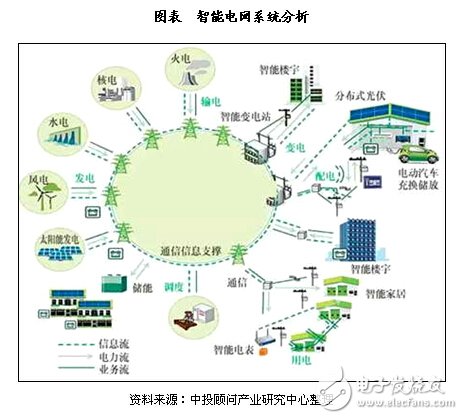The relationship between smart grid and big data
Smart grid is one of the important technical application areas of big data. According to the “13th Five-Year†data released by China Investment Consultant, the smart grid industry investment analysis and forecast report report that the smart grid big data structure is complex and diverse, with characteristics such as dispersion, diversity and complexity. Features bring great challenges to big data processing. The smart grid big data platform is the foundation of big data mining. Through the smart grid big data platform, the smart grid can share data and provide support for business application development and operation.

The smart grid is a new type of grid based on the physical grid, which integrates modern advanced sensor measurement technology, communication technology, information technology, computer technology and control technology with the physical grid. It covers all aspects of power generation, transmission, substation, power distribution, power consumption and dispatching, and coordinates the needs and functions of various stakeholders in the power market, while ensuring efficient operation of all parts of the system and reducing operating costs and environmental impact. To maximize the reliability, self-healing and stability of the system. With the development of smart grids, the grid generates and precipitates a large amount of data in various aspects such as power system operation, equipment condition monitoring, power consumption information collection, and marketing business systems. It is of great significance to fully exploit the value of these data.

Big data is a new concept that has received widespread attention in recent years. It generally refers to data that cannot be perceived, acquired, managed, processed, and analyzed by traditional IT technologies, hardware and software tools, and mathematical analysis methods within a tolerable time. set. Smart grids are seen as one of the key technology areas for big data applications. At present, many scholars are conducting research on smart grid big data, including development strategy research, big data technology research, and applied research.
There are many applications of smart grid big data, including grid security and stable operation, energy-saving economic dispatch, power supply reliability, economic and social development analysis, etc. The smart grid big data analysis needs to unify the smart grid big data, and because of the numerous applications, the calculation, Storage, network and other performance put forward higher requirements, so it is necessary to build a unified big data processing platform for smart grid applications.
Smart Grid Big Data Application
Big data technology has broad application prospects in smart grids. The report discusses three aspects: load forecasting, source network load coordination, and grid planning.
1. Load fluctuations and new energy output prediction
As an important part of grid power management system, load forecasting directly affects the safety and reliability of grid operation. Large prediction errors will bring high risks to grid operation. At present, the load forecasting is mainly based on the load history data, using similar days or other algorithms to predict the load size, the short-term prediction accuracy is high, and the medium- and long-term accuracy is poor. With the increase of the data collection range of the power grid, the use of big data technology can distinguish the different types of data such as meteorological information, user schedule and macroeconomic indicators, and the relationship between the load and the load through abstract quantitative indicators. Accurate perception and improved prediction accuracy.
The continuous access of distributed power generation, especially the increasing penetration rate of new energy, has broken the original mode of power grid operation management, not only considering the fluctuations on the load side, but also taking into account the intermittent nature of new energy output. In China, new energy access is mainly subject to two factors: (1) New energy is mostly distributed at the end of the grid away from the load center, and the grid structure is relatively fragile, resulting in weak grid acceptance; (2) New energy forecasting error Large, the current wind power output forecast is about 20%, 5%, and the real-time error, which will bring greater challenges to grid dispatching. Due to the large forecasting error of new energy sources, it is often necessary to establish a large-scale conventional energy source around the large-scale new energy base as a rotating reserve to make up for the shortcomings in the prediction accuracy of new energy. As a backup conventional power supply, due to the heavier rotation reserve, it will not work at the optimal operating point for a long time, which will result in low power generation efficiency and waste of energy. The use of big data technology can effectively improve the prediction accuracy of new energy output. For example, the Vestas Wind Technology Group of Denmark has adopted IBM's big data solution when forecasting wind power output, and added geographic location when forecasting wind power output. Structured and unstructured massive data such as meteorological reports, tidal phases, and satellite images have optimized wind turbine layout, improved wind power generation and prediction efficiency, and achieved considerable economic benefits.
2. Source network load cooperative scheduling
The use of big data technology can effectively reduce the prediction error of new energy, but for the inherent volatility of new energy output, the traditional scheduling method is solved by increasing the rotation reserve of the system. In the context of continuous improvement of the power market, instead of adjusting the output of conventional power supplies, it is possible to use market means to enable some users to actively reduce or increase part of the load to balance the change in power generation side output, that is, to achieve system power balance through demand side management. . In order to achieve network source-source coordinated optimization scheduling, a large amount of auxiliary information is needed, such as the fluctuation of new energy output, the transmission capacity of power grid lines, the range of power reduction, and the real-time electricity price. Each of these factors is affected by many conditions, so A very complex power trading process, in which case big data technology must be used to explore the internal connections between data to develop the best scheduling solution. The biggest difference between the smart grid and the traditional grid is the two-way flow of information between the source and the network. The information between the three can be smoothly interacted within a framework, greatly improving the economic and reliability of the grid operation.
3. Grid development planning
According to the “13th Five-Year†data released by China Investment Consultant, the smart grid industry investment analysis and prospect forecast report stated that the power grid has developed from the traditional power grid to the smart grid, which will become part of the energy Internet, thus making the grid It is more closely linked to the entire energy network. The proposal of electric gas conversion technology provides a new idea for new energy access, trying to convert unsuitable electric energy into natural gas for storage, but it is still in the technical demonstration stage due to low conversion efficiency. The hot and cold gas triple technology realizes the step utilization of energy, with high energy utilization efficiency, small environmental pollution and good economic benefits. The rise of electric vehicles will significantly increase the proportion of energy consumption at the end of the energy, and the replacement power station will be distributed in every corner of the city like a gas station. Traditional grid planning data sources are insufficient, and data analysis and mining capabilities are lacking. As a result, many uncertainties are faced in the planning process. In particular, new technologies are emerging and energy structures are constantly changing, making traditional grid planning methods It often differs greatly from actual demand. In the process of power grid planning, it is necessary to use big data technology to comprehensively consider various factors such as the access of distributed energy, the growth trend of electric vehicles, and the provision of personalized power services for users in the power market environment, such as multi-type and massive data. The introduction can effectively reduce the uncertainty in the power grid planning process, making the whole planning process more reasonable and orderly.
Disposable Vapes,Disposable Vape Pen,E-Cigarette Vape Pens,High Performance Vaping
Shenzhen Onlyrelx Technology Co.,Ltd , https://www.onlyrelxtech.com
